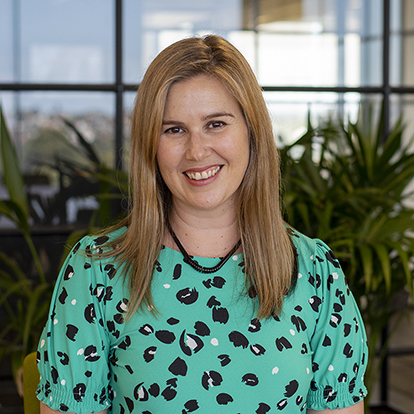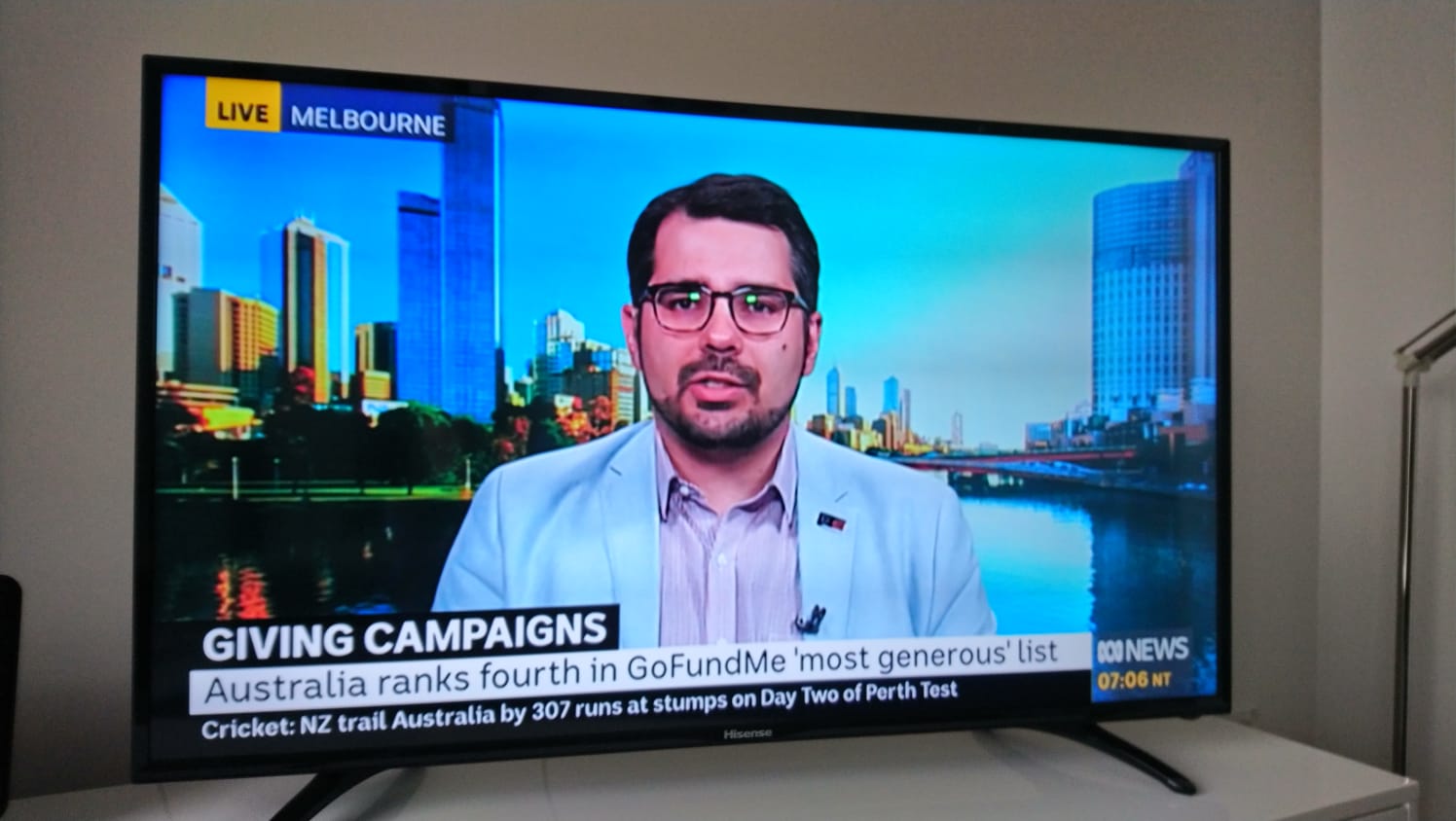As a key contributor to the Blueprint to Grow Structured Giving, philanthropy researcher and academic Krystian Seibert believes that community foundations have the potential to play a “transformative” role in Australian philanthropy.
Reimagining philanthropy to grow giving: Krystian Seibert

Philanthropy researcher, educator and advocate, Krystian Seibert, has been a constant presence and respected commentator in the Australian philanthropic landscape since 2014 when he joined peak body Philanthropy Australia. One of the key shifts he’s observed since then, is a pronounced change in the conversations held within the philanthropic sector; shifting from being largely celebratory towards a tone that is now more nuanced and increasingly self-aware.
With philanthropic giving tipped to be a beneficiary of the unprecedented intergenerational wealth transfer taking place over the next 20 years, Philanthropy Australia has set an ambitious target to double structured giving by 2030. Details are provided in the recently released report, A Blueprint to Grow Structured Giving.
Seibert, who was a key contributor to the Blueprint, says that while we can’t take for granted that the intergenerational wealth transfer will usher in a new era of giving, it will “undoubtedly be interesting to see if this transfer of wealth brings in new donors and organisations and how these new groups might change the direction of the sector.”
Krystian Seibert shared his thoughts about philanthropic trends, opportunities and more in this recent conversation.
From your vantage point, were you surprised by philanthropy’s response to the twin crises of the past year?
KS: The responses to Covid and the bushfires have been really heartening and it made it very clear that the overwhelming majority of people in philanthropy are motivated by altruism and doing the right thing.
In the case of the bushfires, it was great not only to see the mass market donor response and the giving of small amounts in addition to trusts and foundations, but also to see corporates stepping in and of the course the global response which was really exciting.
Then as Covid started, I was really pleased to see the sector support the Philanthropy Australia statement and how philanthropy could respond to the pandemic. I know there was a lot of discussion and engagement between philanthropists and stakeholders reaching out to the organisations they support to see what the real needs were.
It will be interesting to see when we get the data if grantmaking increased or decreased over this period; my view is that it will have increased despite what the markets were doing and I think that’s important because philanthropy has time to earn things back, whereas non-profits with their backs against the wall don’t.
I’ll also be interested to see if there were any shifts beyond the dollars given, around best practices that might have been prompted by the pandemic, for instance unrestricted funded, and whether that might be something that continues. I certainly hope it does. Philanthropy Australia is also doing a small research project focusing on looking at whether that may be the case.
“The intergenerational wealth transfer may change the look and shape of the sector”
What are the biggest ‘trends’ in philanthropic giving that you think we’re going to see more of?
Overall, I think one of the trends we’ve seen is a kind of awakening of philanthropy in terms of its awareness of itself and what its role is and isn’t in society – the fact that it can be a really positive force in some situations, and that it can be the opposite in other circumstances.
Once upon a time it seemed – at least to me, and I acknowledge that I’ve only been active in the sector since 2014 – that the general conversation was much more about celebrating philanthropy but at this year’s Philanthropy Australia conference we’re hearing from people like Edgar Villanueva who’s talking about the need to decolonise philanthropy.
It shows how the sector has changed in terms of its self-perception and being able to have those conversations. Obviously, putting those conversations into action is another matter.
Going forward, I do believe that the intergenerational wealth transfer may change the look and shape of the sector, which could deliver trends that we don’t even know about yet.
There are also macro trends around self-awareness, power, the need to address root causes rather than symptoms, and the need for more unrestricted funding, more funding for advocacy and more grassroots activism.
One trend that I personally would like to see more of is participatory grantmaking. People are beginning to talk about it, and I’d like to see that interest turn into action.

Krystian Seibert speaking on ABC News
Australian Communities Foundation’s vision is to ‘Activate a nation of givers’ – what do you think are the biggest barriers (perceived or otherwise) that prevent more Australians from participating in structured giving?
I don’t think there’s one single barrier – ultimately, we do have a pretty good regulatory framework which I’d say, on balance, is probably even better than the US. Though as the Blueprint points out, there’s also always room for improvement – especially when it comes to some of the red tape imposed on community foundations!
So, if tax and regulations aren’t a big barrier, I think it’s just a cultural thing. Here, some people don’t think to give or they aren’t prompted. If people were regularly asked, ‘Have you thought about philanthropy?’, by their advisers, I think they’d be more open and interested.
Part of growing giving is not just about policy and frameworks but normalising behaviours. Some people may not even consider themselves wealthy but could in fact do some giving.
“Philanthropy is the whole package, it’s not just how you use your dollars, it’s how they’ve been earned. We can’t presume it’s good just because it’s philanthropy”
The increased scrutiny on philanthropic giving here and overseas has raised issues of trust and questioned philanthropy’s influence, its whiteness, and the source of some philanthropic dollars. What does philanthropy need to do to maintain its social licence?
There’s been a lot more scrutiny in the US where it makes it into the mainstream media, and of course there’s been quite a longstanding history of scrutiny there if you think back to someone like Rockefeller.
Philanthropy also plays a bigger role in the US than it does here. In Australia, philanthropy amounts to $2.5 billion a year in granting which is actually a pretty small percentage of non-profit income. That’s partly why it hasn’t attracted the same kind of scrutiny here or in the UK.
But, as philanthropy grows, the scrutiny will too. Philanthropy will need to act in a way that is consistent with its social licence to operate.
Not all the scrutiny will be right – some of it will come down to differing views – but it’s good that the sector is becoming more self-aware, knowing that the social licence under which it operates means different things to different people.
Philanthropy is the whole package, it’s not just how you use your dollars, it’s how they’ve been earned. We can’t presume it’s good just because it’s philanthropy.
One of the articles I’ve written talks about legitimacy and how philanthropic dollars are earned and distributed. Philanthropy has a contract with the community and with stakeholders and we need to work hard to maintain that.
You’ve spoken in the past about the valuable contribution made by community foundations to the broader giving ecosystem. Do you think they will play a critical role in the growth of giving between now and 2030?
I think community foundations are the best kept secret in Australia – if we had many more community foundations, I think it would be transformative.
I do think community foundations are held back by some of the tax and regulatory provisions – this needs to be change and it’s a big focus of the Blueprint.
There’s big potential to grow community philanthropy in Australia. Community foundations help with the democratisation of giving and they demonstrate that philanthropy is not just for wealthy people who sit in boardrooms in the city – people in communities across Australia can do it too.
Can you share a little about your own giving journey, why it’s important to you and the most valuable lesson you’ve learned?
My journey is a bit of accidental one, I’d have to say. At age 18, my conception of philanthropy was largely limited the Sidney Myer Music Bowl and the generosity of Sidney Myer, perhaps walking into a few hospital wings named after some other people.
While I worked in government and was involved in setting up the Australian Charities and Not-for-Profits Commission and regulatory framework, I got to know more about the non-profit sector and I was so delighted to learn about its work for the public good. Plus, it has all the legal and regulatory aspects that get me excited as well!
On top of that, the people who work in the sector energise and inspire me and I feel fortunate to be working as part of the sector, not just in an academic way or theorising from an ivory tower, but also putting it into practice at Philanthropy Australia.
I do my own giving as well, it’s on a relatively small scale but I do try and contribute with regular giving and some ad hoc giving on top of that. I change from different things – I’m a big believer in advocacy and community activism and I also think that we need to shift economic models.
The most valuable lesson I’ve learned is that, despite the move towards absolutes that has been exacerbated by social media – where everything is deemed to be either wrong or right, this way vs that way – things aren’t like that in life or in philanthropy. With many and perhaps even most things in life, there are no absolutes, there’s so much nuance and complexity – though of course, there are some things which are clearly right and wrong. I think the lesson is to be okay with not knowing everything or feeling required to have a strong view on a complex and fuzzy issue.
